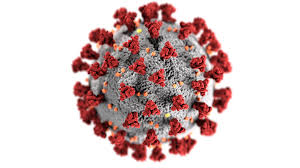Developed by Shray Alag, The Harker School
Sections: Correlations,
Clinical Trials, and HPO
Navigate: Clinical Trials and HPO
| Name (Synonyms) | Correlation | |
|---|---|---|
| drug567 | CLIA of IgG and IgM against SARS-Cov-2 Wiki | 1.00 |
| Name (Synonyms) | Correlation | |
|---|---|---|
| D009140 | Musculoskeletal Diseases NIH | 1.00 |
| D048909 | Diabetes Complications NIH | 1.00 |
| D019636 | Neurodegenerative Diseases NIH | 1.00 |
| Name (Synonyms) | Correlation |
|---|
Navigate: Correlations HPO
There is one clinical trial.
This multi-arm, multi-site study investigates the safety, tolerability, and efficacy of stem cell therapy for the treatment of various acute and chronic conditions. Clinically observed initial findings and an extensive body of research indicate regenerative treatments are both safe and effective for the treatment of multiple conditions.
Description: General Health Outcome Instrument used to derive a simple psychometric score for health related quality of life which provides scores on various dimensions or items describing the systems. The score is derived by adding the unweighted response order of each question, with a lower score denoting a better quality of life.
Measure: Assessment of quality of life (QOL) via 36-Item Short Form Survey (SF-36) change from baseline at 6 and 12 months. Time: Follow up time-frames will measure changes occurring from baseline post procedure at 6 months and 12 months.Description: Upper Extremity Outcome Instrument
Measure: Assessment of disabilities of arm, shoulder, hand via DASH Questionnaire change from baseline at 6 and 12 months. Time: Follow up time-frames will measure changes occurring from baseline post procedure at 6 months and 12 months.Description: Erectile Function Questionnaire. Scoring exists from 0 to 25. The lower the score, the more severe the Erectile Dysfunction.
Measure: Assessment of erectile function via International Index of Erectile Function (IIEF-5) change from baseline at 6 and 12 months. Time: Follow up time-frames will measure changes occurring from baseline post procedure at 6 months and 12 months.Description: COPD Outcome Instrument. Items are scored on a Likert scale (range 0-60). Higher scores indicate a worse health status.
Measure: Assessment of COPD via Clinical Chronic Obstructive Pulmonary Disease Questionnaire change from baseline at 6 and 12 months. Time: Follow up time-frames will measure changes occurring from baseline post procedure at 6 months and 12 months.Description: Memory Outcome Instrument. The maximum MMSE score is 30 points. The lower the score, the more severe the dementia.
Measure: Assessment of mental state via Mini Mental State Examination (MMSE) change from baseline at 6 and 12 months. Time: Follow up time-frames will measure changes occurring from baseline post procedure at 6 months and 12 months.Description: Voiding and Pain Indices. Possible score of 0-20 with higher scores denoting better function.
Measure: Assessment of interstitial cystitis via O'Leary/Sant Questionnaire change from baseline at 6 and 12 months. Time: Follow up time-frames will measure changes occurring from baseline post procedure at 6 months and 12 months.Description: Low Back Pain Outcome Instrument. Possible score of 0-100 with lower scores denoting better function.
Measure: Assessment of back pain via Oswestry Low Back Pain Disability Questionnaire change from baseline at 6 and 12 months. Time: Follow up time-frames will measure changes occurring from baseline post procedure at 6 months and 12 months.Description: Arthritis Outcome Instrument. Individual question scores are then summed to form a raw score ranging from 0 (worst) to 96 (best)
Measure: Assessment of osteoarthritis via Western Ontario and McMaster Osteoarthritis Index (WOMAC) change from baseline at 6 and 12 months. Time: Follow up time-frames will measure changes occurring from baseline post procedure at 6 months and 12 months.Alphabetical listing of all HPO terms. Navigate: Correlations Clinical Trials





Data processed on January 01, 2021.
An HTML report was created for each of the unique drugs, MeSH, and HPO terms associated with COVID-19 clinical trials. Each report contains a list of either the drug, the MeSH terms, or the HPO terms. All of the terms in a category are displayed on the left-hand side of the report to enable easy navigation, and the reports contain a list of correlated drugs, MeSH, and HPO terms. Further, all reports contain the details of the clinical trials in which the term is referenced. Every clinical trial report shows the mapped HPO and MeSH terms, which are also hyperlinked. Related HPO terms, with their associated genes, protein mutations, and SNPs are also referenced in the report.
Drug Reports MeSH Reports HPO Reports